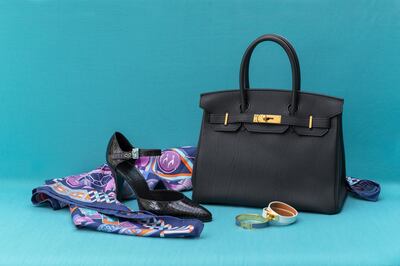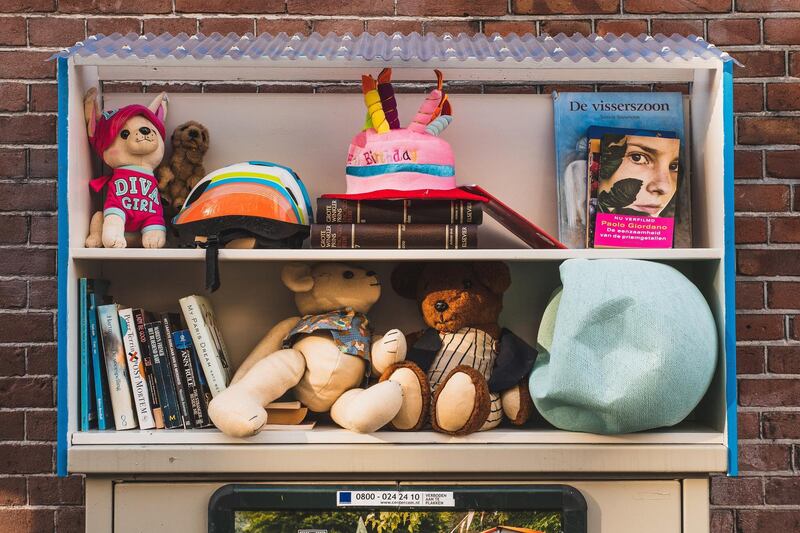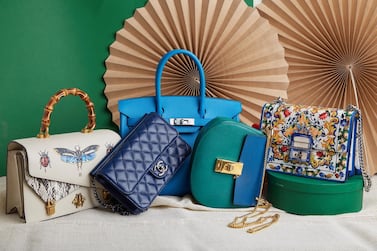Whether you're looking to let go of items that don't – in the words of Marie Kondo – spark joy, or clearing out your home ahead of a big move, it's best to know your options when it comes to selling items you no longer need.
But in the current climate, the idea of an informal garage sale or hitting up a flea market isn't quite as palatable as it was pre-pandemic.
So, here are some tips on selling second-hand goods during this time, from using technology to your benefit to meeting buyers while minimising physical contact.
1. Look up the online platforms at your disposal
According to Jennifer Sault, founder and managing director of Thrift for Good, there are a number of digital platforms available in the UAE where you can sell second-hand goods.
“We have all these resources at our fingertips that enable us to sell products online without meeting, or by only meeting with a good distance,” she says.
When it comes selling luxury items, she recommends using The Luxury Closet, which offers a home pick-up service for those looking to sell their wares, or La Suite UAE. For those willing to drop off their mid to high-end goods, Dubai's Retold, on Umm Suqeim Road, is a boutique that accepts pre-owned fashion.
Those looking to sell furniture and other household items can look at Dubizzle, Varage Sale or use community or second-hand groups on Facebook.
2. Fix a fair price

The best way to decide on the price of a second-hand product is to do a cursory search online, and compare it to similar items being sold.
“On average, users discount the price between 40 to 70 per cent [from its original retail cost], depending on the condition of the item,” says Helmut Bracun, general manager of classifieds, trust and safety at Dubizzle.
Used clothing, for example, can be priced at roughly a fifth of the original retail price.
Bracun advises that customers should set the prices slightly above what they are willing to settle for. “Buyers will try to negotiate, especially when an item is not competitively priced.”
3. Take a good picture
It’s worth taking the time to get that perfect snap, as the right photo really helps make a product more attractive to buyers. Some things to keep in mind are good lighting, and being honest about any flaws in the product, so that you are not misleading potential buyers, says Bracun.
Another important rule is to ensure that the photo does not accidentally include any personal details or family members in the background.
“Do not put out any information that identifies you personally unless necessary. Keep in mind that every piece of information you post may be used for purposes other than what you intended. Limit your information to limit your risk and just focus on showing the item being sold,” says Bracun.
4. Be honest in the description
Along with a good photo, include a catchy but correct title, making the brand and model of the item clear, and a strong description. The information should be precise, detailing every element of the product, its current condition and any further information about why it is fairly priced (for example, if it has a tag or an original receipt, and how long it has been used).
If they are essential products that you need until a set date, make sure you mention when it will be available for pick-up.
5. Set up a meeting
Once you have found an interested buyer, conduct a socially distanced meeting, with both parties wearing face masks, avoid handshakes and staying two metres apart for the exchange.
Bracun advises sanitising items before handing them over. Finally, do not schedule a meeting if you have any Covid-19 symptoms, such as a fever, cough or difficulty breathing.
Not comfortable with a physical meeting? Small items can be delivered through services such as Careem Box, while Dubizzle has launched a delivery service that allows sellers to send items sold via Service Market.
6. Opt for cashless payments
A number of brands and restaurants now require cashless payments, and you can too if you would like to reduce contact. Inform the seller that you would prefer a bank transfer. Sault also recommends GoCollect for cashless payments.
7. If you can’t sell, donate
Given the current economic situation around the world, Sault encourages people not to throw away products that are in a good condition. “There are channels where other people may be able to benefit from then,” she explains. Thrift for Good, for example, resells or recycles donated items, with money going towards Gulf for Good.
It has a pick-up service in Dubai every Monday, and accepts anything from clothing to furniture to books.












